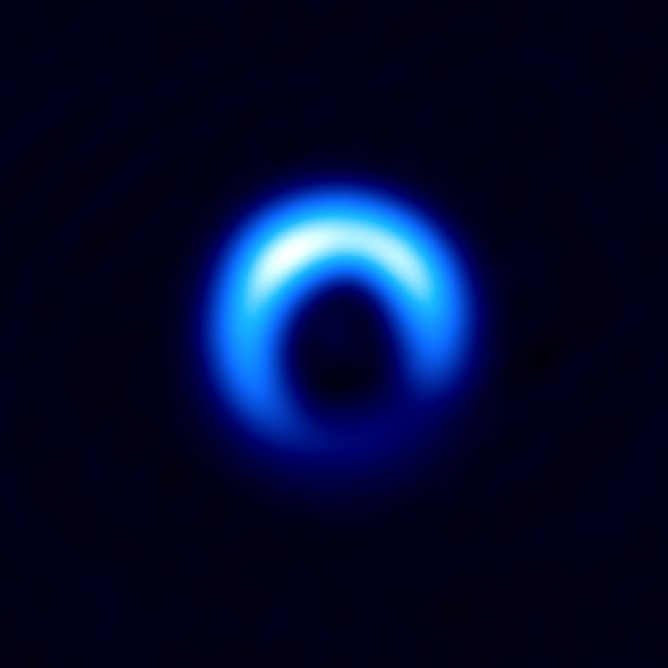Researchers have demonstrated ALMA’s unprecedented capability for polarimetry in millimeter wavebands. Polarimetry is an important method to investigate magnetic fields in the Universe and astronomers eager to use ALMA for unveiling magnetic mysteries, such as the launching mechanism of high energy jets from supermassive black holes.
The magnetic field is ubiquitous and plays considerable roles in the Universe. We can find the directions by using a compass thanks to Earth’s magnetic field. Sunspots and solar flares are driven by magnetic fields in the Sun. Magnetic fields are also important in various phenomena including formation of stars and planets and exotic events around black holes. In spite of its significance, measurement of magnetic fields is challenging. Polarimetry is one of the handful methods to investigate magnetic fields in the Universe.
ALMA is designed to perform sensitive polarimetry observations. To verify its capability, astronomers observe well-known objects and compare the results with those with existing telescopes. ALMA started science observations for general astronomers around the world in 2011, but in parallel, science verification activities for advanced observation methods have been carried out.
ALMA observed a bright source 3C 286 for the verifications of polarimetry observations. The source, located 7.3 billion light years away from us, is a quasar, emitting very strong radio waves. Many researchers assume that a supermassive black hole is located in the center of a quasar and intense magnetic fields are responsible for ejecting powerful jets. ALMA pointed to the root of the jet from 3C 286 to measure the intensity and the angle of polarization. The result shows that the shorter wavelength radio wave observed with ALMA is more strongly polarized than longer wavelength waves observed with other telescopes. Shorter wavelength radio waves are thought to be emitted close into the root of the jet, so the result shows that the magnetic field is stronger and better aligned at the root of the jet. This helps researchers understand the magnetic field structure in the heart of a quasar.
“This observation has certainly verified the high capability of the polarimetry observation with ALMA,” said Hiroshi Nagai at the National Astronomical Observatory of Japan and the leader of the verification team. “This is an important milestone for the ALMA project.”
In general, the polarized component is as weak as a few percent of the total radio flux from an object. High sensitivity is essential for the precise polarimetry, and ALMA is suitable for it. The science verification activity includes the establishment of the proper calibration and many test observations have been performed to ensure the high precision. Such behind-the-scenes efforts provide a firm platform for advanced observations with ALMA.
These observation results were published by Nagai et al. as “ALMA Science Verification Data: Millimeter Continuum Polarimetry of the Bright Radio Quasar 3C 286” in the Astrophysical Journal issued on 20 June 2016.
The science verification activities for polarimetry is introduced in an article “Polarization observations with ALMA” in the serial column Bienvenido a ALMA!”
Figure shows 3C 286 observed with ALMA. Contours shows the intensity of radio waves and purple bars shows the polarization direction. The central part of the quasar is located in the center, and a part of the jet ejected by the quasar is seen in right.
Credit: ALMA (ESO/NAOJ/NRAO), Nagai et al.










